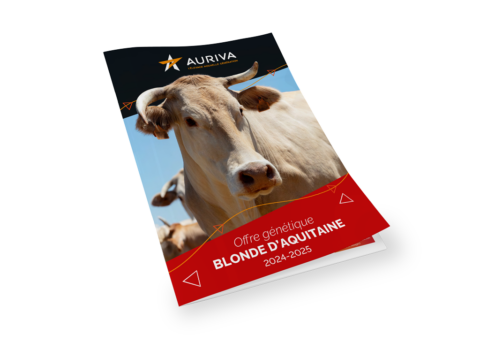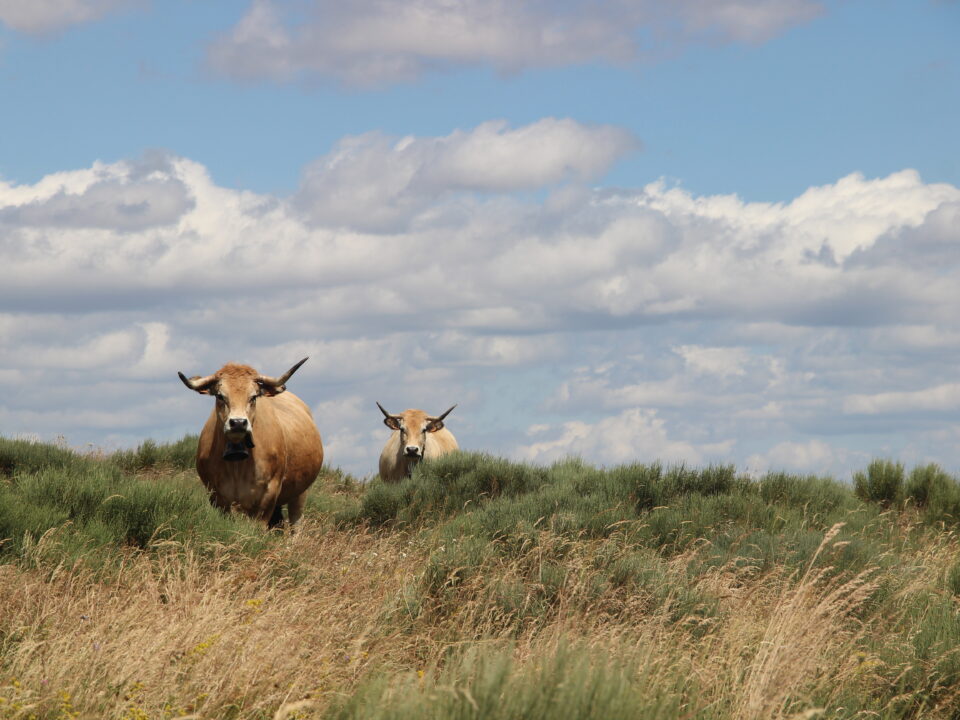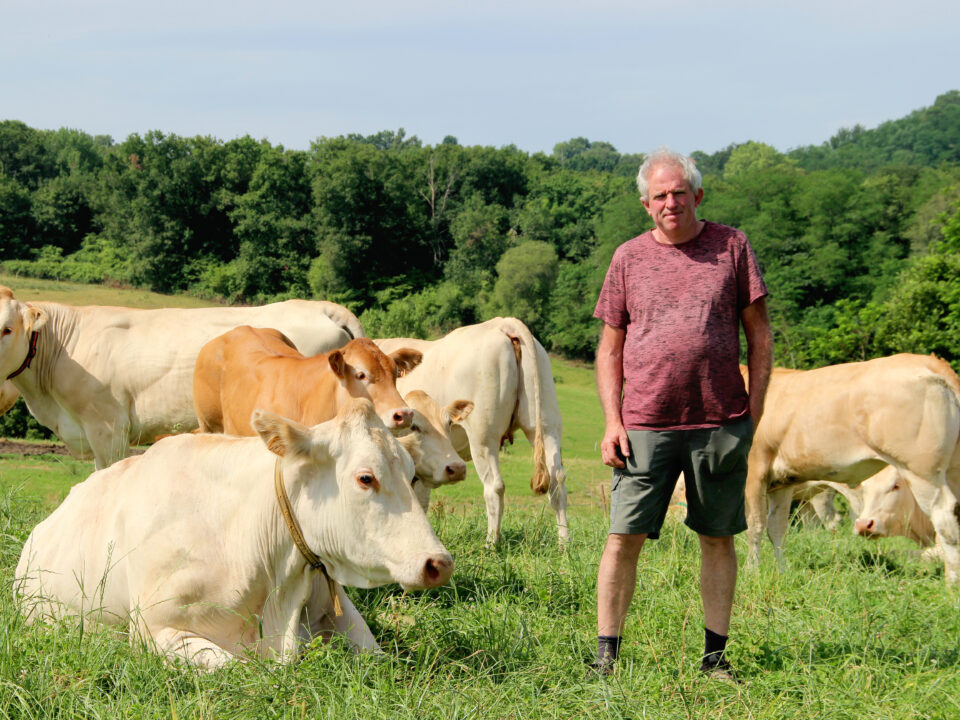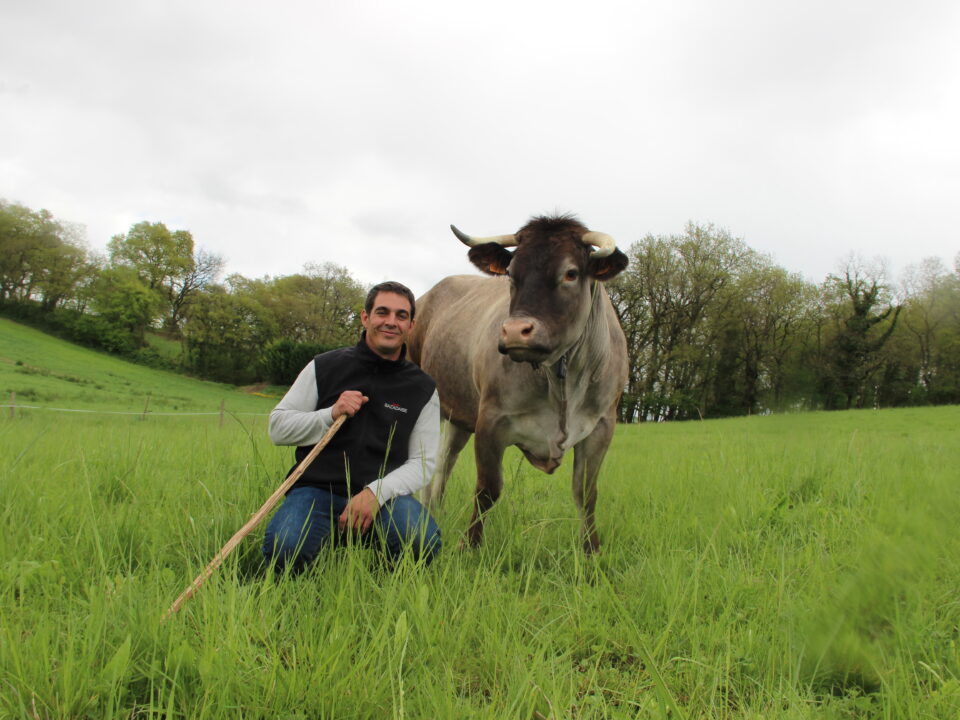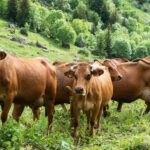
Tarine genotyping: an essential lever for optimizing your genetics
8 April 2025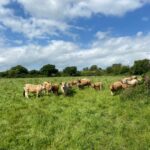
Breeding practices: how do our Irish neighbors do it?
29 April 2025Trip to Hungary from February 9 to 12, 2025
Last February, Pierre Etchecopar, Blonde d’Aquitaine breed technician, travelled to Budapest in Hungary with Cyril Josse from Synetics Export and Jean Blanc, representative of Blonde Pays d’Oc. Accompanied by Marton Szücs, coordinator of the Hungarian association of the Blonde d’Aquitaine and Limousine breeds, this trip was not only an opportunity to sample the local gastronomy, but also to discover 3 Blonde d’Aquitaine farms.
A little history
Hungary currently has 2,000 purebred Blonde cows monitored by the national association and a few thousand outside the herd book. Developed in the country in the 90s after the collapse of the Soviet bloc, the Blonde is used in terminal crossbreeding with mixed breeds such as the Simmental, which is very common in the country, and also with dairy breeds such as the Friesian. One of the breed’s pioneering breeders, Mr. Martomachar, started purebred breeding by absorption, using seed from Midatest French bulls marketed by Sersia (now AURIVA-Elevage and Synetics Export respectively).
In the mid-2000s, the first animals were imported from France via the Blonde Pays d’Oc structure and the Aussac sale. Over a hundred animals were imported over 3 years, all of them to Timea.
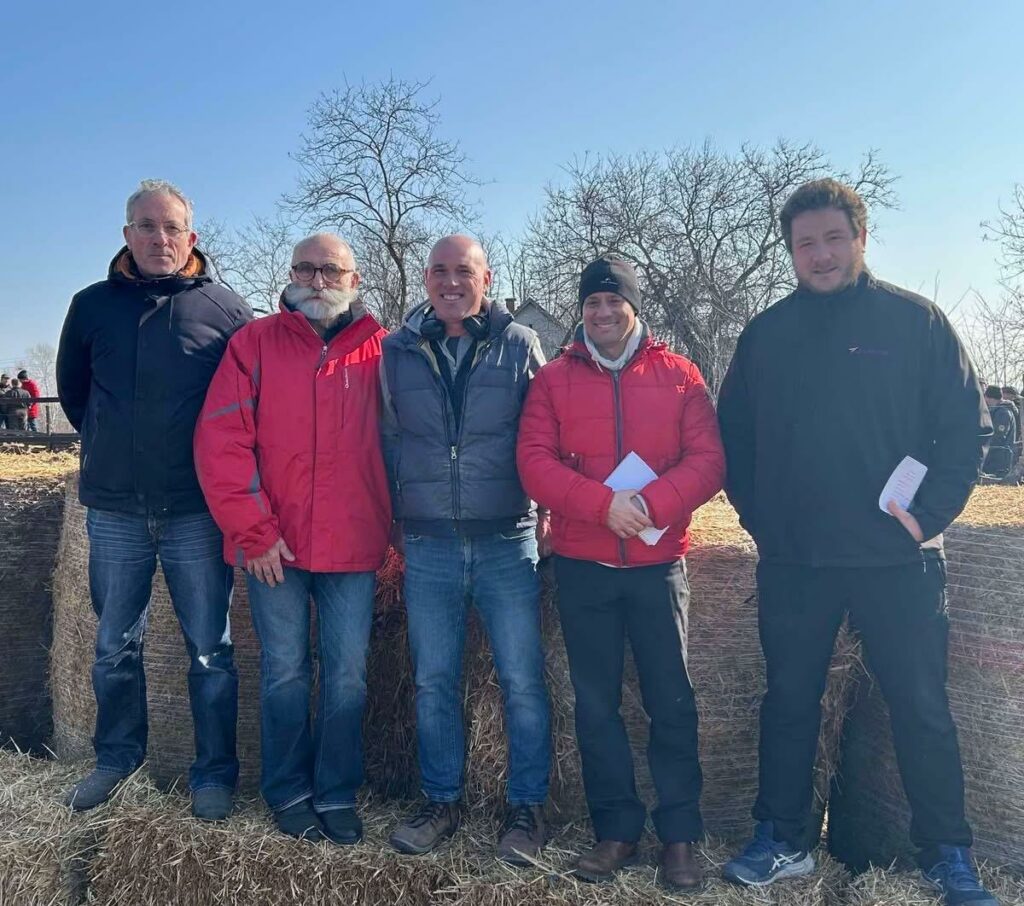
Ferme Timéa: technicality and AI bulls
Just a few kilometers from the Croatian border, in Babocsa, lies the Timea farm, a large operation covering almost five hundred hectares. The AURIVA-SYNETICS-Blonde Pays d’OC team not only presented our selection scheme, but also the French racial objectives and dose export system to the breeders in attendance, before taking a tour of the farm.
There are around 200 calvings here, and all cull animals are slaughtered and cut up in the farm’s private abattoir. This is a highly technical operation, based on self-sufficiency in feed and close observation of the animals.
Since 2000, the buildings formerly used to run dairy cows have been converted to a beef farm, and the farm also houses a large feed mill where all fattening rations and calf supplements are made.
With 90% of cows from French sires, this breeding has a good morphology. Bulls such as Berlioz, Brasier, Aramis and, more recently, Edison have left their mark on this breeding operation, where research has tended to focus on mixed breeding. With a maximum carcass yield, these animals give complete satisfaction once slaughtered.
The visit continued at the local abattoir.
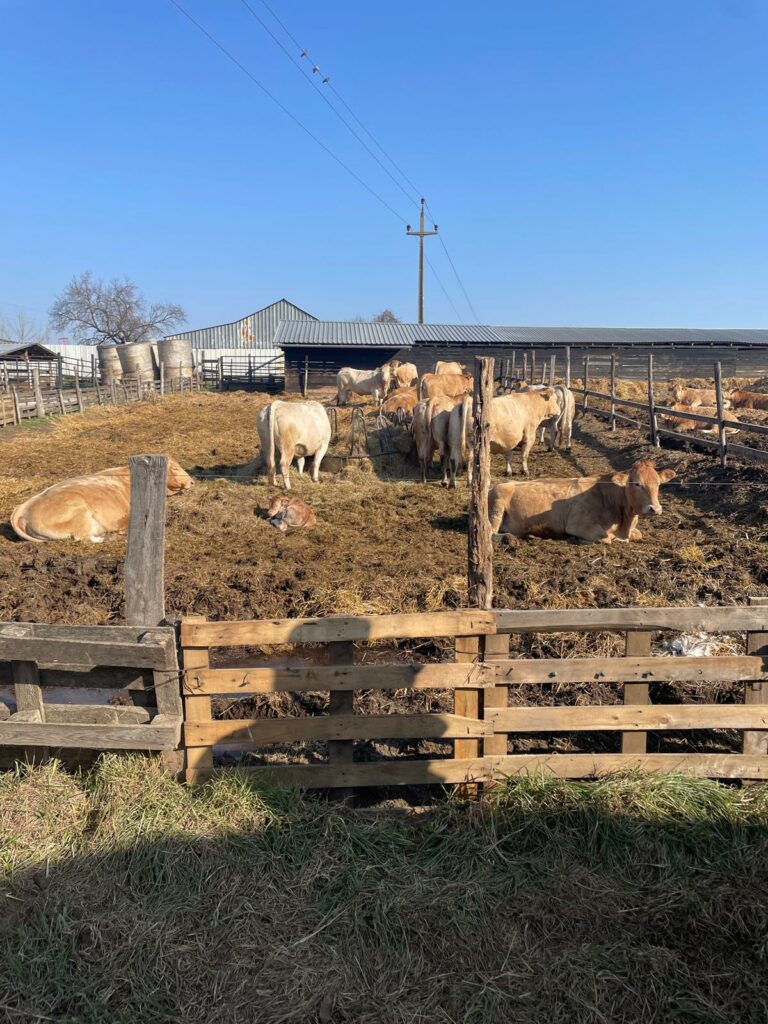
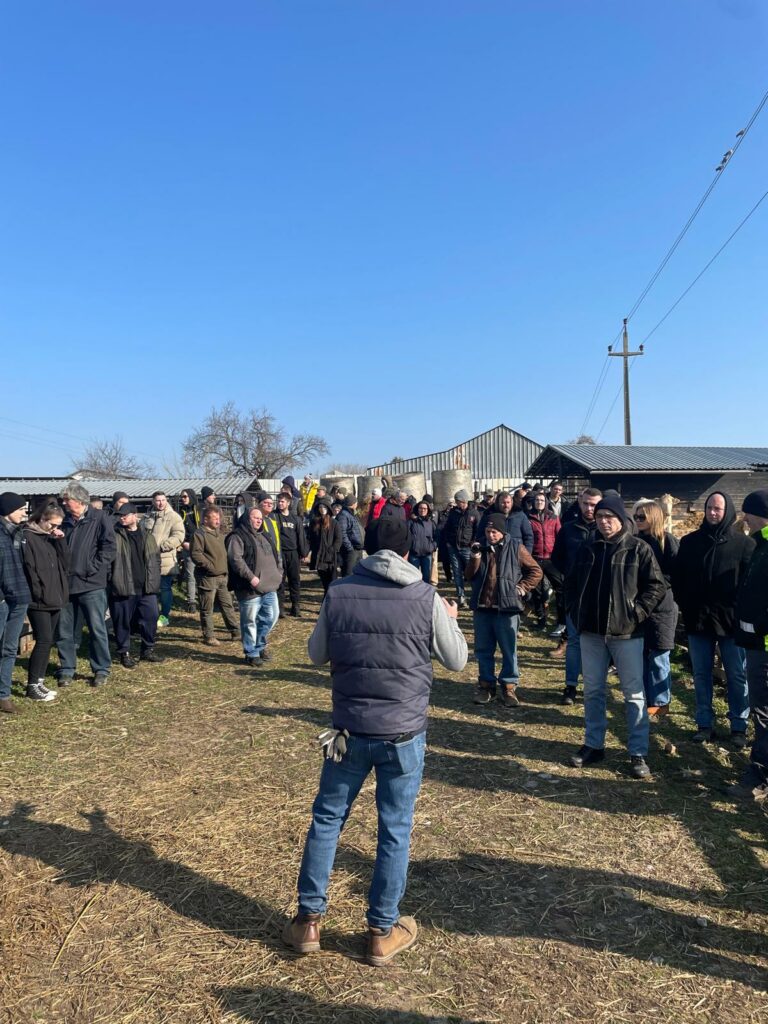
"We visited the slaughter line, where four hundred cattle are slaughtered every year, and we also got to see the refrigerators where different carcasses are stored: young blond cattle and blond Simmental crosses, three-year-old blond heifers and blond cows between 5 and 7 years old. The most interesting part is that each bovine is weighed before slaughter and then weighed in carcass and then the net meat weight is also researched. This was quite a surprise for me, as the most interesting cattle between live weight and carcass weight were not the small butchered and splintered cattle, but rather the large ones. The butchers explain these results by the length of the animals, enabling them to optimize the length of the cuts and therefore their weight.
Pierre ETCHECOPAR
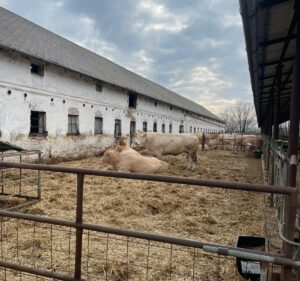
Marton Revesz: loyal to AURIVA
The visit continues at Marton Revesz, where around a hundred animals are inseminated each year: NARUTO and EDISON for the cows, and FUXEEN and LARGO for the heifers. Close to the popular seaside destination of Lake Balaton, the farm extends over 2800 hectares and includes 200 Blonde d’Aquitaine cows from Mr Martochar’s herd.
While French genetics have already conquered this farm, the visit is an opportunity to take stock and talk about the 2025 breeding campaign. For mixed breeding, the bulls PATUA and NARKO are recommended for Marton cows, as well as the Iboval bull STEWBALL to bring in breed qualities. For heifers, LARGO is his choice, as he really appreciates his calves, and PYHA will provide him with milk.
On the technical side, Marton carries out copros on a fortnight’s worth of cows each year, in order to implement a personalized vaccine based on the viruses present in the animals. The farm is also working on feed efficiency with a special Dac system that also weighs the roughage consumed by the animals.
Total infatuation with the Blonde
On Tuesday morning, Marton picked us up at the hotel to take us to Roland Branya’s Blonde Tanya breeding farm, two and a half hours southeast of Budapest. No fewer than 130 people were waiting for Pierre, Cyril and Jean for their3rd and final visit two and a half hours southeast of Budapest: breeders, fatteners and feed merchants, all very interested in and convinced by the blonde.
After another presentation of our selection scheme and the distribution of our catalogs translated into English, it was time for a real show! A straw-bale ring was set up, complete with speakers and microphones, enabling Pierre to make a morphological presentation and assessment of the animals with the help of Mr. Zsombor Wagenhoffer, the head of the structure managing the entire breeding operation in Hungary.
The enthusiasm of the breeders, their technical skills and their knowledge of breeding make Hungary a superb host country with great development potential for the Blonde d’Aquitaine. We’d like to thank all the breeders and guides for making our team so welcome. To find out more about Hungarian gastronomy, pálinka or the Blonde d’Aquitaine, don’t hesitate to contact Pierre Etchecopar or our Blonde team.

